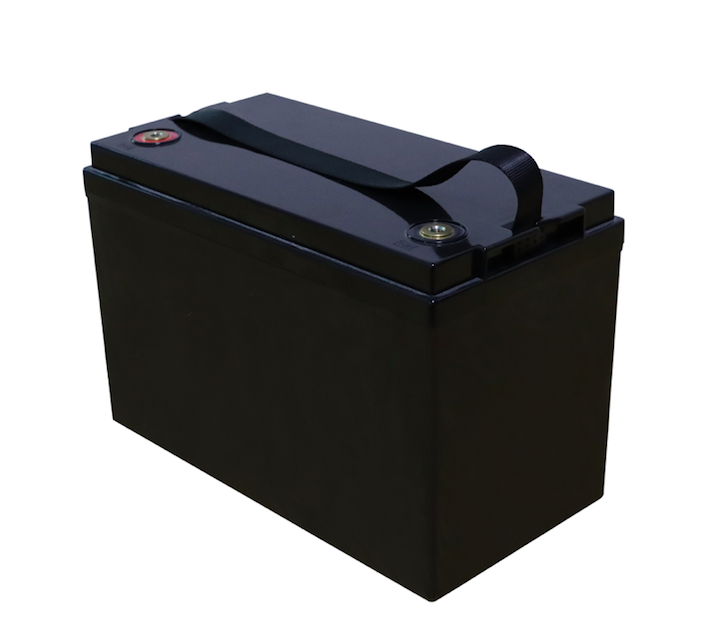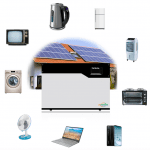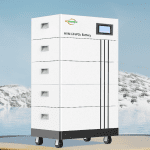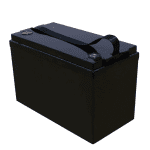Lithium batteries are a kind of rechargeable batteries. Lithium battery is mainly used in mobile communications, digital cameras, and other light-powered equipment. The energy density of lithium batteries is about 1/4 that of lead-acid batteries, but the volume and weight are only 1/8. So it has a very high energy-to-weight ratio.
What is the lithium battery?
Lithium batteries are rechargeable, with a high energy density and short charging time. They can be used in various fields, such as electric vehicles, mobile phones, laptops, and power tools. There are different types of lithium cells and batteries on the market. The lithium-ion battery is one of them. The following are some features of this kind of battery:
- The lithium-ion battery has three electrodes: a positive electrode (cathode), a negative electrode (anode), and a separator between them; when charging, it will generate electrons at its cathode end; when discharging, it will release ions from its cathode end through its electrolyte to electron flow directionally through an external circuit path.
- This kind of battery has high energy density but low power density due to its high internal resistance caused by significant volume expansion during the reaction process with limited ability in current output; if you want more powerful output capacity, then you need more than one cell assembly connected in series or parallel configuration.
Lithium batteries are a kind of rechargeable batteries.
Lithium batteries, also known as lithium-ion batteries, are a type of rechargeable battery that can be used in many different applications. They have become the most widely used rechargeable batteries on the market due to their high energy density and low self-discharge rate. The use of lithium batteries has grown significantly since they were first introduced in 1991, with over 400 million units sold globally in 2018 alone.

Lithium-ion batteries have several advantages over other types of rechargeable batteries. They can store more energy per unit volume than different kinds of cells (they have a high energy density), meaning they’re lighter or smaller than non-lithium ion equivalents would be if they had similar capacities. Lithium-ion cells also charge faster than lead acid or nickel metal hydride cells do; this is because lithium ions move quickly through their electrolyte when charging/discharging compared with other materials, which require more complex processes during charge/discharge cycles, such as sodium ions moving through glass separators for lead acid cells or nickel cobalt aluminum oxide powder mixed with carbon paste for NiMH cells.”
What are the lithium battery characteristics?
Lithium batteries have the following characteristics:
High energy density. The specific energy of lithium-ion batteries is over twice that of lead-acid and nickel-metal hydride batteries, making them the best choice for applications requiring high power in a lightweight, small-volume package.
Low self-discharge rate. Lithium batteries have a self-discharge rate of less than 3% per month. Compared to about 10% for lead acid and up to 15% for nickel-cadmium or alkaline/zinc carbon chemistries. This means lithium batteries can sit idle for years without losing their charge. They are ideal for long-life backup applications like wireless communication devices, medical implants, and monitoring equipment that people may forget about but still need working when needed most!
High energy density
The high energy density of lithium batteries makes them ideal for electric vehicles, drones, and other applications.
High energy density: Lithium batteries have a higher energy density than other rechargeable batteries. Theoretically. Lithium-ion batteries’ maximum theoretical specific energy (Wh/kg) is about 650 watt-hours per kilogram. This figure is derived by assuming that the battery can be discharged at a rate of 100% in one hour and then recharged in an hour at a constant current until complete exhaustion occurs. High specific power capacity: The discharge current from a battery should not exceed its rated value. Otherwise, it will lead to severe damage to the product. If you want to choose a lithium battery with a high discharge current rating. We recommend you consult your technical experts or contact us directly. Long life cycle: Lithium-ion batteries are generally good at resisting abuse or overcharge compared with other rechargeable batteries such as nickel metal hydride (NiMH), nickel-cadmium, and lead acid.
Low self-discharge rate, generally less than 3% per month
Lithium batteries have the following advantages:
Long service life. Because of the low self-discharge rate, lithium batteries generally have a long service life, especially when fully charged and stored at room temperature. For example, a 3000mAh lithium battery can maintain 90% of its capacity after storage for more than one year in room temperature conditions. In addition, there is no need to add water or other liquids during use. Because it does not contain AA alkaline batteries, which will cause electrolytes to evaporate over time, you do not have to worry about whether they will work when used again!
Compared with the early glass cans, the internal pressure of containers made of plastic materials used today is higher. Therefore, it is not easy to leak or explode. Any air molecule may escape through a hole created by dropping it onto a hard surface in a glass jar. This may cause these containers to leak due to their design. These leaks would lead directly into open flames if something went wrong during the charging process with those older types. Then there would be potential danger posed towards nearby humans who might want.
Light weight, small volume, no memory effect
As a kind of rechargeable battery, lithium battery has lightweight, has a small volume, and has no memory effect.
It’s different from the old nickel-cadmium and nickel-metal hydride batteries, which are heavy and bulky.
Besides, it also has high energy density and a low self-discharge rate.
The lithium battery is a kind of rechargeable battery. It has high energy density, low self-discharge rate, and no memory effect. So it is widely used in many fields. Such as mobile phones, computers, electric bicycles, and other electronic products.










